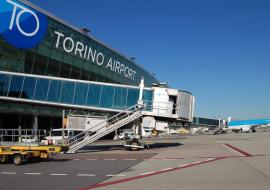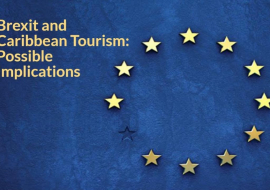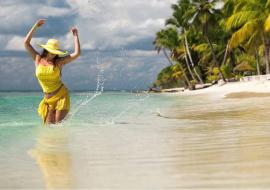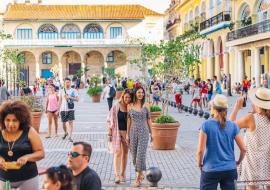The Current Status and Future of Tourism in Belize
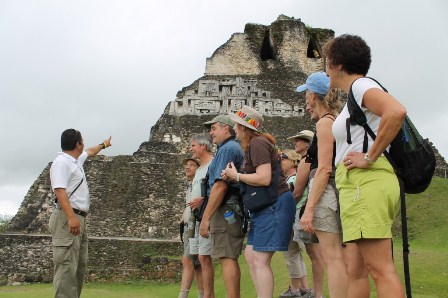
The World Bank estimated that tourism arrivals in Belize in 2000 were 196,000 visitors, with total spend of US$111 million. The Belize Tourism Board (BTB) estimated that in 2013, a total of 294,177 tourists visited the country. This reflects annual growth of between 4-8%.
The Center on Eco-Tourism and Sustainable Development (CETSD) informs that, after starting in 2002, cruise tourism peaked in 2005 at 800,331 visitors, and BTB estimated that in 2013 a total of 677,350 cruise tourists visited the country.
The CETSD estimated that at its peak in 2005, cruise tourists spent a total of US$30.6 million (90% from USA origin), and that overnight visitors (60% from USA origin) spent US$144.1 million and that cruise tourism provided 1 out of every 10 jobs in the tourism industry, while overnight tourism provided 9 out of every 10 tourism jobs. The tourism industry has been estimated to account for 20-30% of GDP depending on motives and methodology used by the proponents.
Most overnight tourism investors view cruise tourism as a threat to their business, mostly due to competition for the accessible attraction sites, and cruise tourism investments have faced significant opposition from overnight investors, in general.
Belize’s overnight tourism includes low, middle and high-end customers with campers and backpackers an estimated 20%, budget travelers (students, charities, group travel, etc.) 50%, middle-level eco-tourists and events/business/conference goers 15%, and higher-end boutique jungle and diving/fishing/sailing enthusiasts (15%). These are my own estimates from rapid scan of the type and scale of establishments and services available in the country.
Belize’s tourism demand is directly related to the product offers and can be classified as: (1) sun, sea and sand recreation tourism (2) gastronomic tourism (3) inland and coastal nature-based adventure tourism (4) Mayan and cultural tourism (5) sex, drugs and ragamuffin tourism (6) Diaspora and ex-pat family and friends visits (7) events and conferences (8) specialized fishing, diving and yachting expeditions (9) regional “Mundo Maya” tourism (10) business, charities and retirement/resettlement scouting (11) natural-history/cultural education and charity travel. Each tourist might choose one or more of these offers during a particular visit.
I could not find any reliable data on visitors to Belize age ranges, male/female distribution, marital status, lifestyle preferences, economic status, traveling alone, accompanied or in group, etc. or how many are first-time or repeat visitors what they are seeking or expect and their levels of satisfaction with their experiences all of which are vital for more substantial product-market and economic analysis.
In 2013, overnight arrivals ranged from 10-12,000 in September, to 32-36,000 in March with December to March being high season, April-July medium season and August-November low season. Cruise tourism could be described as high season from November-April, with its low season between May-October the lowest being around 22,000 visitors each for June and September, the highest being around 90,000 each for December and January.
Hence, tourism is pretty much a seasonal business for Belize, with the peaks and troughs following similar trends for overnight and cruise tourism and this reflects the fact that demand for Belize tourism offers is currently primarily motivated by sun, sea and sand seeking, mostly from USA buyers during their winter months.
Being that the country depends so much on tourism, this seasonality has all kinds of social, cultural, political and economic implications that need to be better researched and understood. Many years of “efforts” have not yielded the desirable result of reducing this large variance between peaks and troughs and the euphoria and trauma that accompany them.
There is a National Sustainable Tourism Master Plan for Belize 2030, which was officially approved by the Government of Belize on October 30, 2012 which sets an ambition to almost triple the amount of overnight tourism arrivals while enhancing their length of stay and daily expenditure, and to double the cruise tourism arrivals by the year 2030.
It also aims to increase the annual economic contribution from tourism to five-times its current level. It suggests that the number of hotel rooms will need to increase from 6,885 in 2010, to 13,754 in 2030. It envisions a countrywide expansion in inland and coastal tourism offers, with a more diversified portfolio.
Its expectations seem to lean heavily on significantly growing European travel to Belize, while maintaining current rates of growth from existing North American markets a strategy perhaps adopted hoping that it will help with reducing seasonality, as there is a perception that many Europeans travel during the Belize slow-season but which might be unrealistic, if the competitiveness gaps are not resolved.
When placed into context of Belize’s development as a whole, tourism has outpaced the rest of the economy in terms of growth and if this ambitious plan is realized, Belize’s future will lean much more heavily on tourism which raises the question of whether tourism planning that is not anchored in national economic plans makes for practicality, sensibility and optimal balance.
Tourism, however, finds itself sharing the same principal challenge as other sectors in the economy competitiveness, especially relative to cost/quality, physical infrastructure, cultural/social development, safety/security.
Source: Breaking Belize News







